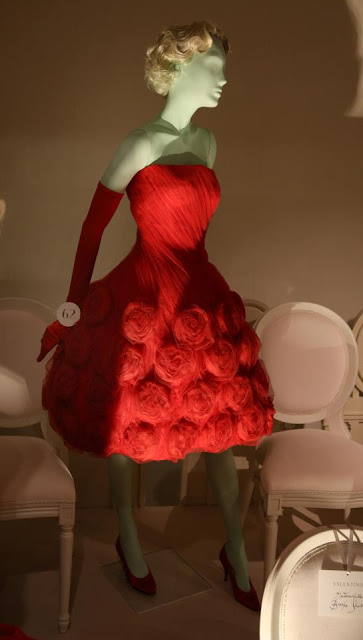A few weeks ago I received a rather exciting email regarding Horrockses, and I suppose this blog posts as both a plea for anyone who owns/ has owned certain dresses and also providing some more information on the brand.
Horrockses during the 40s and 50s employed a large number of different designers to create their printed textiles, some such as Eduardo Paolozzi created only a few desings, whilst others, such as Pat Albeck and Graham Sutherland created huge numbers of designs for the company. Some designers, Albeck is a great example, have a very distinctive illustrative style which can be quickly recognised. Although others output and style was more varied. I know that some of the print designers worked on commissions for the fashion designers at the company (a lobster print created for John Tullis by Pat Albeck is a particular favourite of mine).
A typically Albeck design.
Although I have come across a large number of print designers for Horrockses a chance search on twitter a few weeks ago turned up researchers gold.
One of the most special Horrockses I have is one printed with “Elizabeth Regina 1953”. Tht tweet related to this very print. The print was designed by Margaret Meades who worked freelance for Horrockses. Her designs weere mostly used in the early years of Horrockses fashions (late forties early fifties).
Margaret trained at Manchester College of Art where on graduating she continued to lecture for many years. Margaret was also a member of the Society of Industrial Artists.
Here are a few more of Margaret’s designs which were kindly sent to me by her daughter. It would be great if anyone has the original dresses, so that they can be compared to her designs.
The print above has to be my favourite by Meades, and is also very familiar, I feel sure I have seen this one before!
If you would like to find out more about Margaret Meades do visit the website
http://highlandpaintingandprints.co.uk/index.html
Also! If you have orignal dresses that feature any of the prints i have shown please do send me pics.
liztregenza@hotmail.com
A quick note: All of these designs were sold to Horrockses, but they were not necessarily produced. As I explained in my post for Unmaking things Horrockses always overpurchased on textile designs to retain their design prestige.





















